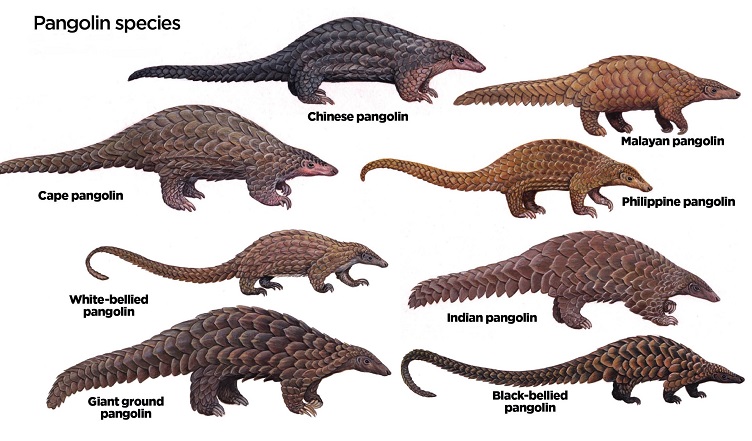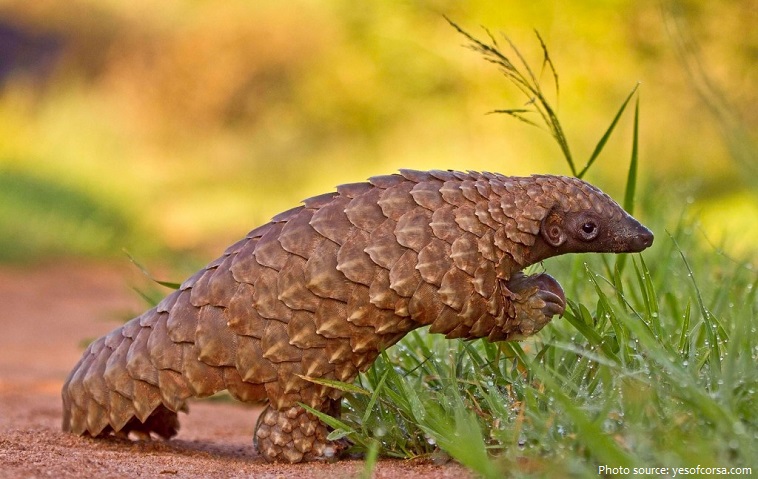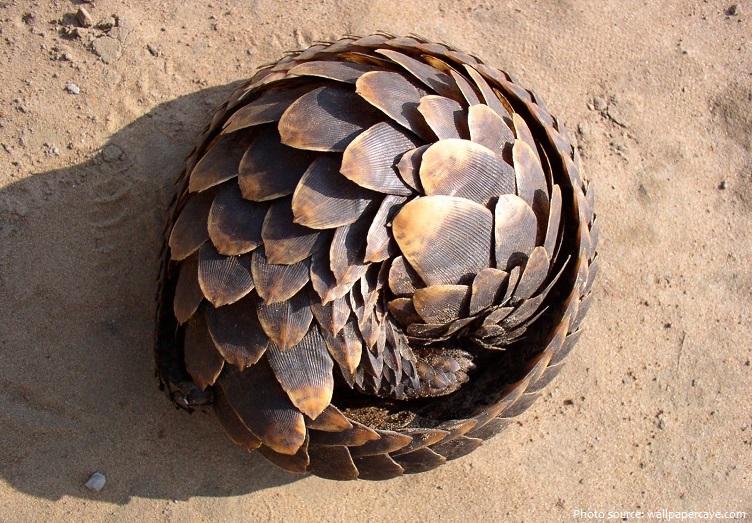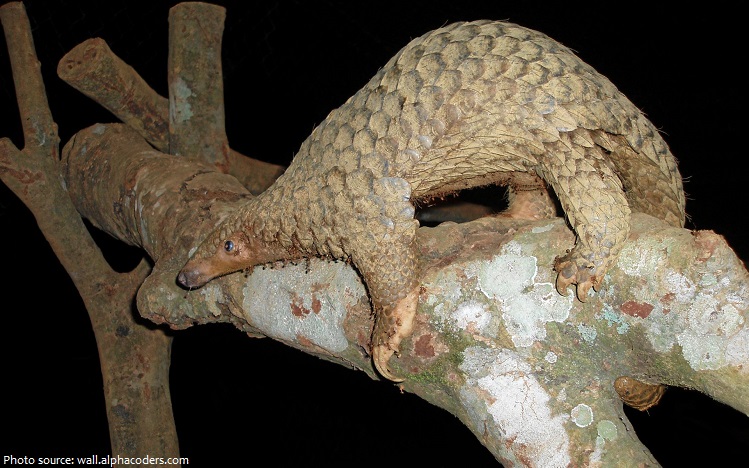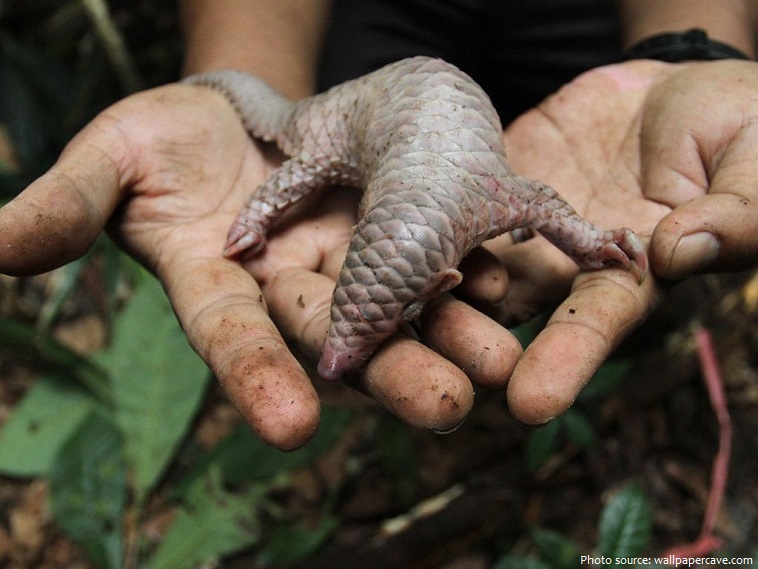Pangolin or scaly anteaters is a unique-looking mammal.
There are eight species of pangolins four species are found in Africa and four in Africa.
These eight species are: the long-tailed pangolin, tree pangolin, giant pangolin, ground pangolin, Indian pangolin, Philippine pangolin, Chinese pangolin and Sunda pangolin.
They are found in diverse habitats in tropical and subtropical regions in sub-Saharan Africa and southern and southeastern Asia.
The lifespan of the pangolin is unknown, but the observed lifespan in captivity is 20 years.
Pangolins are 30 to 100 centimeters (12 to 39 inches) long exclusive of the tail and weigh from 5 to 27 kilograms (10 to 60 pounds). Females are generally smaller than males.
Pangolins have large, protective keratin scales covering their skin; they are the only known mammals with this feature.
The pangolin’s scaled body is comparable in appearance to a pine cone. It can curl up into a ball when threatened, with its overlapping scales acting as armor, while it protects its face by tucking it under its tail. The scales are sharp, providing extra defense from predators.
The four Asian pangolins are distinguished from the African species by the presence of bristles which emerge from between the scales.
They have short legs, with sharp claws which they use for burrowing into ant and termite mounds, and climbing.
The head is short and conical, with small thickly lidded eyes and a long toothless muzzle; the tongue is wormlike and can extend up to 25 centimeters (10 inches) in length in large species. Their saliva is sticky, causing ants and termites to stick to their long tongues when they are hunting through insect tunnels.
Pangolins are insectivorous. Most of their diet consists of various species of ants and termites and may be supplemented by other insects, especially larvae. They are somewhat particular and tend to consume only one or two species of insects, even when many species are available to them. A pangolin can consume 140 to 200 g (4.9 to 7.1 oz) of insects per day.
Pangolins have a very poor sense of vision, so they rely heavily on smell and hearing.
Most pangolins are nocturnal animals that use their well-developed sense of smell to find insects. The long-tailed pangolin is active by day, while other species of pangolins spend most of the daytime sleeping, curled up into a ball. Pangolins are considered to be shy and secretive creatures.
Pangolins are solitary and meet only to mate. While the mating season is not defined, they typically mate once each year, usually during the summer or autumn. Gestation periods differ by species, ranging from roughly 70 to 140 days. African pangolin females usually give birth to a single offspring at a time, but the Asiatic species may give birth from one to three.
At the time of birth, the scales are soft and white. After several days, they harden and darken to resemble those of an adult pangolin. The baby is not able to walk for a few weeks, instead, it clings to the base of the mother’s tail. Young pangolins are weaned at four months and are ready for life on their own at about five months of age.
Leopards, hyenas, and pythons are pangolin predators.
The name “pangolin comes from the Malay word pengguling, meaning “one who rolls up.” This is fitting for an animal that can roll itself into a ball.
Pangolins can emit a noxious-smelling chemical, similar to the spray of a skunk.
Pangolin’s scales are made of keratin, the same material from which human fingernails and tetrapod claws are made.
Pangolins are threatened by poaching (for their meat and scales) and heavy deforestation of their natural habitats, and are the most trafficked mammals in the world.
Of the eight species of pangolin, four (the long-tailed pangolin, tree pangolin, giant pangolin, and ground pangolin) are listed as vulnerable, two (Indian pangolin and Philippine pangolin) are listed as endangered, and two (Chinese pangolin and Sunda pangolin) are listed as critically endangered on the International Union for Conservation of Nature Red List of Threatened Species.

